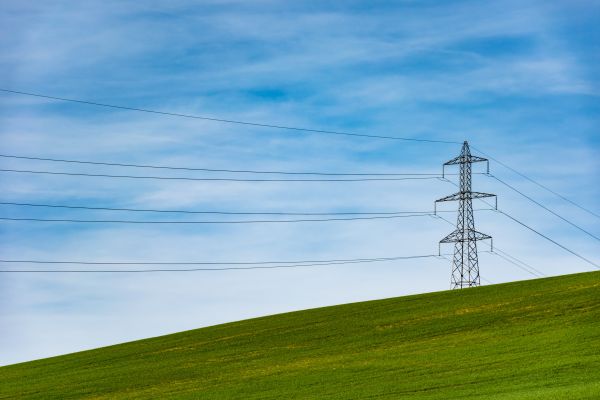
On road trips as a kid, I often ended up watching the mesmerizing rise and fall of power lines that lined the road. This was usually after I had exhausted the more accessible modes of entertainment I had with me — usually Mad Libs and 1001-facts-type books — and perhaps after a boredom-induced tantrum or two.
There was something pacifying about this silent rising and falling pattern. I would ignore the poles and just watch the endless black wire itself, staring right at the point where it met edge of the van’s window. The wire would dip down gracefully, like a figure skater about to swing her leg up into a double axel. Then it would accelerate up to its peak, and immediately swoop back down again.
That peak, that crest, would only last an instant, but there was a certain surreal thrill about it, like seeing a fish jump, or a shooting star. It was gone before you could really look at it, but you absolutely saw it, and in that silent instant of vanishing there seemed to be a wink of magic.
Years later, as a mindfulness-curious adult, I learned that human beings have been observing these moments of vanishing, on purpose, for a very long time. By noticing the instant where a thing disappears – a drop of water into the bath, a firefly’s glow winking out – people in various cultural traditions have tried to catch glimpses of whatever that bit of magic was that I first noticed on those endless rural car rides.
Read More

Since spring I’ve been training for my first half-marathon, and during the past month I’ve slipped behind the program. The trouble began when I missed a two consecutive Sunday runs – the longest and most important runs of the week — due to a combination of bad weather and general cowardice.
The simplest way to recover from this lapse would have been to do more running. I missed some miles. No big deal — I could make them up, or just resume the schedule the next day, and still be fine for the race. And I could aid this recovery effort by cleaning up my nutrition a bit and getting more sleep.
That is what a rational individual would do, anyway. In the weeks since the lapse, I’ve been running even less, eating more junk, and staying up later. My short runs began to feel like long ones, and I stopped doing the long ones altogether. Then I caught a cold and took another week off to recover.
This extended sort of lapse is what you could call a rut. The initial trouble was just a bump or a pothole – a jarring and unpleasant spot, but not a problem if you just focus on staying on the road until you’re past it. Instead, I veered into the soft ditch, the wheels sunk in, and soon I couldn’t seem to get back onto the road under my own power. I felt like I had to wait until conditions allowed me to get the wheels back onto the pavement, which means plodding along in the mud until the rut shallows out again on its own.
I think that’s what defines a proper rut—a loss of momentum so thorough that simply resuming what you were doing, as you might have after a single bad day, no longer seems like an option. Instead you feel like you have to work your way back to your regular programming, by way of a long and convoluted detour.
Read More


 I'm David, and Raptitude is a blog about getting better at being human -- things we can do to improve our lives today.
I'm David, and Raptitude is a blog about getting better at being human -- things we can do to improve our lives today.
It all pretty the opposite if you're not in the US :) Since 2022 I've changed 3 countries and I'm planning to emigrate to the fourth one. I've had so much novelty and so many things to adapt to. However, time had never run so fast for me as in 2022...